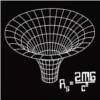Ultimately I can suck it and see, but maybe someone has already tried this and has the answer:
Is there any information of how the internals of the duel R14k CPU modules are physically built up, laid-out ?
Could I open a R12k duel CPU module and put in 14k@600MHz chips and would it run on an Octane 2 ?
I ask as 14K@600Meg duel modules appear thin on the ground. But I see a number of single R14k@600Meg CPU modules around and R12K duels modules to possibly make it (maybe) cost effective to do this swap.
But wonder if anyone has tried this or knows if there are any things such as pad misalignment from chip to chip to prevent this working?
OBB
Is there any information of how the internals of the duel R14k CPU modules are physically built up, laid-out ?
Could I open a R12k duel CPU module and put in 14k@600MHz chips and would it run on an Octane 2 ?
I ask as 14K@600Meg duel modules appear thin on the ground. But I see a number of single R14k@600Meg CPU modules around and R12K duels modules to possibly make it (maybe) cost effective to do this swap.
But wonder if anyone has tried this or knows if there are any things such as pad misalignment from chip to chip to prevent this working?
OBB




 R16000 700MHz 8GB RAM
R16000 700MHz 8GB RAM
 R12000 300MHz SI 896MB RAM
R12000 300MHz SI 896MB RAM
 R12000A 400MHz V6 2.5GB RAM
R12000A 400MHz V6 2.5GB RAM
 (Acclaim) R4600 133MHz XL Graphics 32MB RAM
(Acclaim) R4600 133MHz XL Graphics 32MB RAM














 (single-CM)
(single-CM)